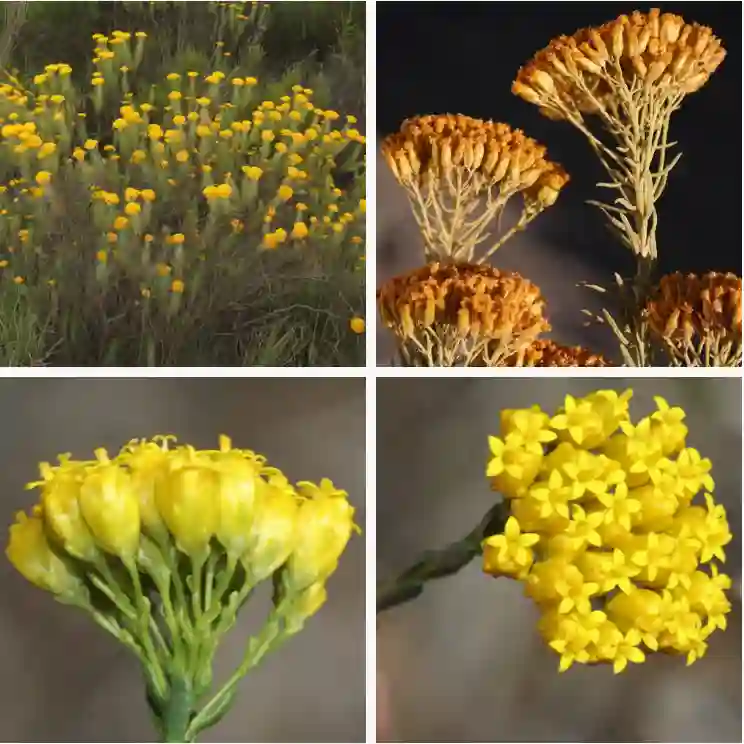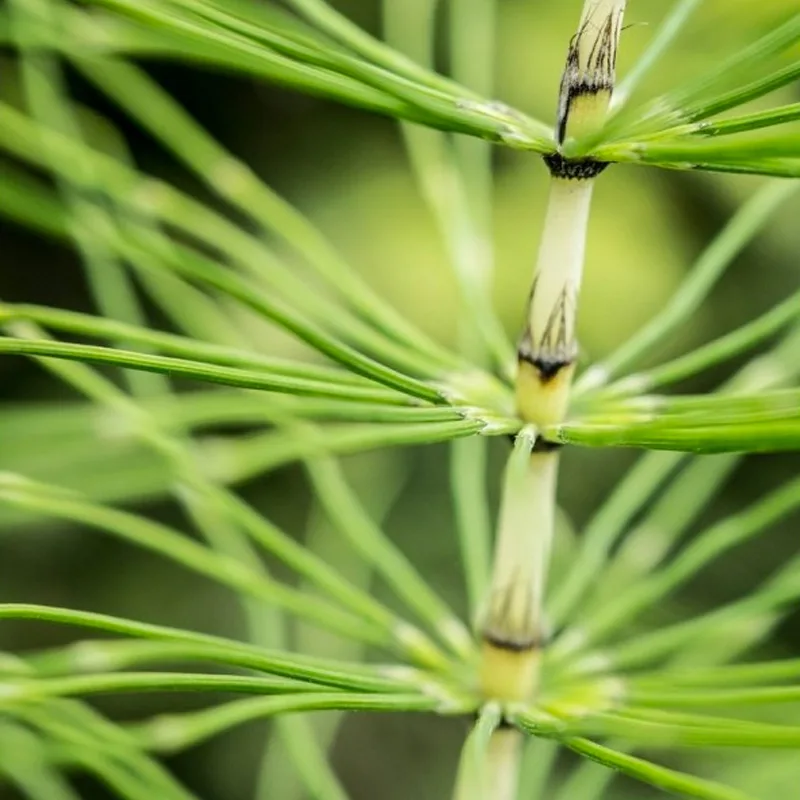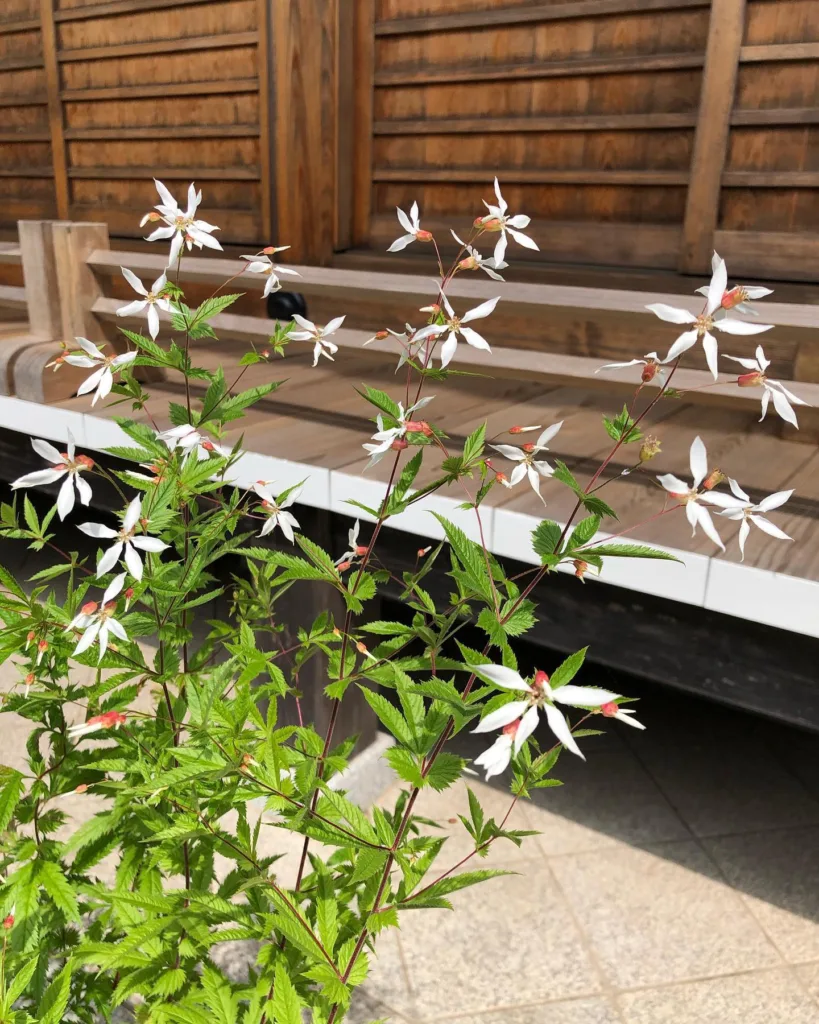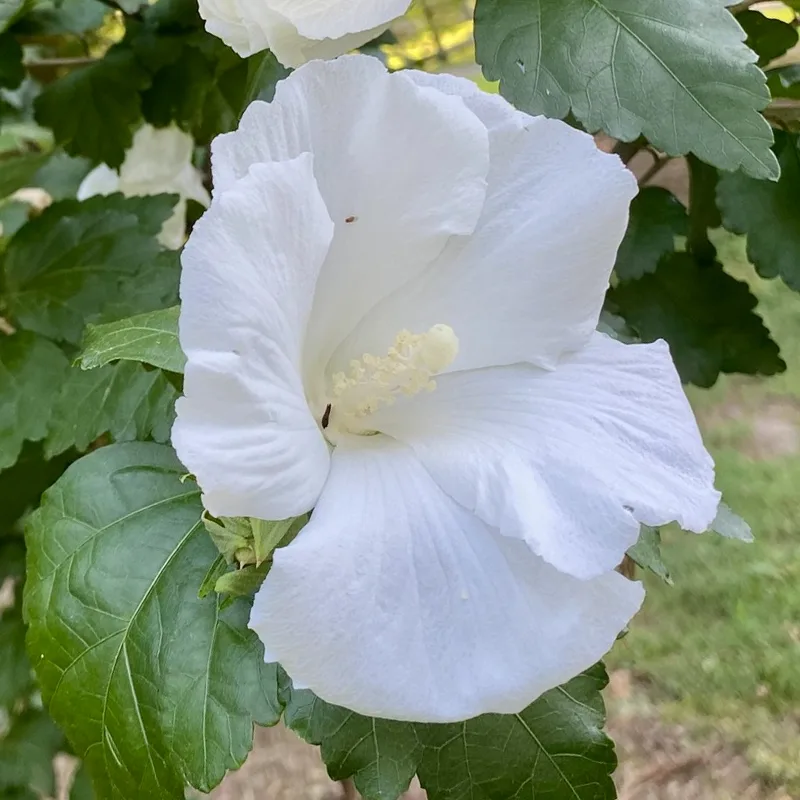Mussaenda: A World of Color Beyond the Bloom
My name is Ferb Vu, and I’ve always been drawn to the vibrant colors and unique beauty of the natural world. Among my many botanical fascinations, the genus Mussaenda belong to the Rubiaceae family, holds a special place in my heart. These tropical shrubs, native to Africa and Asia, are known for their showy displays, but what truly captivates me goes beyond their initial appearance. It’s the subtle intricacies and surprising adaptations that make them so intriguing.
More Than Just a Pretty Face
At first glance, you might be deceived by the explosion of color that Mussaenda offers. But those brightly colored “petals” aren’t actually petals at all. They are enlarged sepals, modified leaves that surround the actual flower. This clever botanical trickery serves to attract pollinators, showcasing nature’s ingenuity in ensuring the continuation of the species. The true flowers, often small and tubular, are nestled within this vibrant display, adding another layer of complexity to their allure.
This genus boasts a remarkable diversity, with over 185 recognized species. There are:
- Mussaenda acalycophylla S.S.Ying
- Mussaenda acuminata Blume
- Mussaenda acuminatissima Merr.
- Mussaenda aestuarii K.Schum.
- Mussaenda afzelii G.Don
- Mussaenda afzelioides Wernham
- Mussaenda albiflora Merr.
- Mussaenda angustisepala Ridl.
- Mussaenda anisophylla S.Vidal
- Mussaenda antiloga Chun & W.C.Ko
- Mussaenda aptera Pit.
- Mussaenda arcuata Poir.
- Mussaenda attenuifolia Elmer
- Mussaenda bammleri Valeton
- Mussaenda benguetensis Elmer
- Mussaenda bevanii F.Muell.
- Mussaenda bityensis Wernham
- Mussaenda bodenii Wernham
- Mussaenda bonii Pit.
- Mussaenda borbonica Lapeyrere
- Mussaenda brachygyna Merr. & L.M.Perry
- Mussaenda breviloba S.Moore
- Mussaenda cambodiana Pierre ex Pit.
- Mussaenda campanulata T.T.Duan & D.X.Zhang
- Mussaenda caudatiloba D.Fang
- Mussaenda celebica Ridl.
- Mussaenda chevalieri Pit.
- Mussaenda chingii C.Y.Wu ex H.H.Hsue & H.Wu
- Mussaenda chippii Wernham
- Mussaenda chlorantha Merr.
- Mussaenda chrysotricha Valeton
- Mussaenda conferta Sujana & Vadhyar
- Mussaenda conopharyngiifolia Stapf
- Mussaenda cordifolia Wall. ex G.Don
- Mussaenda corymbosa Roxb.
- Mussaenda cylindrocarpa Burck
- Mussaenda darenensis S.S.Ying
- Mussaenda dasyphylla Miq.
- Mussaenda dawei Hutch.
- Mussaenda debeauxii Wernham
- Mussaenda decipiens H.Li
- Mussaenda densiflora H.L.Li
- Mussaenda dinhensis Pierre ex Pit.
- Mussaenda divaricata Hutch.
- Mussaenda dranensis Wernham
- Mussaenda elegans Schumach. & Thonn.
- Mussaenda elliptica Hutch.
- Mussaenda elmeri Merr.
- Mussaenda emeiensis Z.Y.Zhu & S.J.Zhu
- Mussaenda epiphytica Cheek
- Mussaenda erosa Champ. ex Benth.
- Mussaenda erythrophylla Schumach. & Thonn.
- Mussaenda ferruginea K.Schum.
- Mussaenda fissibractea Merr.
- Mussaenda forbesii Wernham ex S.Moore
- Mussaenda forsteniana Miq.
- Mussaenda frondosa L.
- Mussaenda garrettii Craib
- Mussaenda glabra Vahl
- Mussaenda glabrata (Hook.f.) Hutch. ex Gamble
- Mussaenda gossweileri Wernham
- Mussaenda grandibracteata Alejandro
- Mussaenda grandiflora Benth.
- Mussaenda grandifolia Elmer
- Mussaenda griffithii Wight ex Hook.f.
- Mussaenda hainanensis Merr.
- Mussaenda heinsioides Hiern
- Mussaenda herderscheeana Valeton
- Mussaenda hilaris Pierre ex Pit.
- Mussaenda hirsuta Ridl.
- Mussaenda hirsutissima (Hook.f.) Hutch. ex Gamble
- Mussaenda hirsutula Miq.
- Mussaenda hoaensis Pierre ex Pit.
- Mussaenda horenensis S.S.Ying
- Mussaenda incana Wall.
- Mussaenda intuspilosa Jayaw.
- Mussaenda isertiana DC.
- Mussaenda johannis-winkleri Merr.
- Mussaenda kajewskii Merr. & L.M.Perry
- Mussaenda kanehirae Merr. & L.M.Perry
- Mussaenda keenanii Hook.f.
- Mussaenda kerrii Craib
- Mussaenda kingdon-wardii Jayaw.
- Mussaenda kwangsiensis H.L.Li
- Mussaenda kwangtungensis H.L.Li
- Mussaenda lanata C.B.Rob.
- Mussaenda lancifolia K.Krause
- Mussaenda lancipetala X.F.Deng & D.X.Zhang
- Mussaenda landolphioides Wernham
- Mussaenda lanuginosa Ridl.
- Mussaenda laxa (Hook.f.) Hutch. ex Gamble
- Mussaenda laxiflora Hutch.
- Mussaenda leptantha Wernham
- Mussaenda leucophylla E.M.A.Petit
- Mussaenda leucova Gilli
- Mussaenda liedeae Alejandro
- Mussaenda linderi Hutch. & Dalziel
- Mussaenda lobbii (Ridl.) Govaerts
- Mussaenda longipetala H.L.Li
- Mussaenda longituba Valeton
- Mussaenda lotungensis Chun & W.C.Ko
- Mussaenda macrantha Valeton
- Mussaenda macrophylla Wall.
- Mussaenda magallanensis Elmer
- Mussaenda maingayi (Hook.f.) Hemsl. ex T.Durand & B.D.Jacks.
- Mussaenda malaccensis Ridl.
- Mussaenda malacotricha Merr. & L.M.Perry
- Mussaenda membranifolia Merr.
- Mussaenda microdonta Wernham
- Mussaenda milleri Elmer ex Alejandro
- Mussaenda mollissima C.Y.Wu ex H.H.Hsue & H.Wu
- Mussaenda monticola K.Krause
- Mussaenda motleyi Ridl.
- Mussaenda multibracteata Merr.
- Mussaenda multinervis C.Y.Wu ex H.H.Hsue & H.Wu
- Mussaenda nannanii Wernham
- Mussaenda nervosa Elmer
- Mussaenda nicobarica Shimpale, S.R.Yadav & Babu
- Mussaenda nijensis R.D.Good
- Mussaenda nivea A.Chev. ex Hutch. & Dalziel
- Mussaenda oreadum Wernham
- Mussaenda ornata S.Moore
- Mussaenda ovata Merr. & L.M.Perry
- Mussaenda palawanensis Merr.
- Mussaenda paludosa E.M.A.Petit
- Mussaenda parryorum C.E.C.Fisch.
- Mussaenda parva Wall. ex G.Don
- Mussaenda parviflora Miq.
- Mussaenda parvifolia Valeton
- Mussaenda philippica A.Rich.
- Mussaenda philippinensis Merr.
- Mussaenda pilosissima Valeton
- Mussaenda pinatubensis Elmer
- Mussaenda pingbianensis C.Y.Wu ex H.H.Hsue & H.Wu
- Mussaenda pluviatilis S.Moore
- Mussaenda polita Hiern
- Mussaenda polyneura King
- Mussaenda procera F.M.Bailey
- Mussaenda pubescens Dryand.
- Mussaenda pullei Valeton
- Mussaenda purpurascens Ridl.
- Mussaenda raiateensis J.W.Moore
- Mussaenda recurvata Naiki, Tagane & Yahara
- Mussaenda reflexisepala Tao Chen & Duy
- Mussaenda reinwardtiana Miq.
- Mussaenda ridleyana Wernham
- Mussaenda rivularis Welw. ex Hiern
- Mussaenda roxburghii Hook.f.
- Mussaenda rufa A.Rich.
- Mussaenda rufescens Valeton
- Mussaenda rufinervia Miq.
- Mussaenda sabahensis Govaerts
- Mussaenda saigonensis Pierre ex Pit.
- Mussaenda samana Jayaw.
- Mussaenda sandakana Govaerts
- Mussaenda sanderiana Ridl.
- Mussaenda scandens Elmer
- Mussaenda scratchleyi Wernham
- Mussaenda sessilifolia Hutch.
- Mussaenda setosa Merr.
- Mussaenda shikokiana Makino
- Mussaenda simpliciloba Hand.-Mazz.
- Mussaenda soyauxii Büttner
- Mussaenda spectabilis Ridl.
- Mussaenda squiresii Merr.
- Mussaenda subsessilis Pierre ex Pit.
- Mussaenda tenuiflora Benth.
- Mussaenda teysmanniana Miq.
- Mussaenda theifera Pierre ex Carr.
- Mussaenda thorelii Pit.
- Mussaenda tomentosa Wall. ex G.Don
- Mussaenda treutleri Stapf
- Mussaenda tristigmatica Cummins
- Mussaenda uniflora Wall. ex G.Don
- Mussaenda ustii Alejandro
- Mussaenda utakwae Wernham
- Mussaenda variolosa Wall. ex G.Don
- Mussaenda vidalii Elmer
- Mussaenda villosa Wall. ex G.Don
- Mussaenda viridiflora Alejandro
- Mussaenda wallichii G.Don
- Mussaenda whitei S.Moore
- Mussaenda wrayi King
- Mussaenda yunnanensis T.T.Duan & D.X.Zhang
- Mussaenda zenkeri Wernham
How to Grow Mussaenda from Cuttings?
Growing Mussaenda from cuttings is a relatively straightforward process. To start, you’ll want to select healthy stems from an established plant. Ideally, the cuttings should be around 4-6 inches long and taken from new growth. Dip the cut ends in rooting hormone to encourage root development. I’ve found that using a well-draining potting mix, like a blend of peat and perlite, works best. Place the cuttings in a warm, bright location, but avoid direct sunlight which can scorch the young plants. Keep the soil consistently moist but not waterlogged. In about 4-6 weeks, you should see roots beginning to develop. Once the cuttings have a healthy root system, you can transplant them into larger pots or directly into the garden.
Where to Buy Mussaenda Plants?
Finding Mussaenda plants can be a bit of a hunt. Local nurseries that specialize in tropical plants often carry them. If you’re having trouble locating a nursery, consider checking online plant retailers. Websites like Etsy, Amazon, or specialized tropical plant shops often have a variety of Mussaenda plants available for purchase. I’ve also had luck connecting with local plant enthusiasts and gardening clubs, who sometimes sell or trade plants.
Do Mussaenda Plants Tolerate Salt?
Mussaenda plants are not particularly salt-tolerant. If you’re growing them in coastal areas where salt spray or high soil salinity is a concern, you might need to take extra precautions. Regularly flush the soil with fresh water to help reduce salt buildup, and consider using a barrier to protect the plants from direct salt exposure. In my experience, providing Mussaenda with a well-draining soil mix and keeping them well-watered helps minimize the impact of salt stress.
How Tall Do Mussaenda Plants Get?
Mussaenda plants can vary in size depending on the species and growing conditions. Generally, they can reach heights of 3 to 10 feet. For instance, the Mussaenda philippica, also known as the “Golden Mussaenda,” tends to grow larger, while other varieties might stay more compact. I’ve noticed that providing ample space and regular pruning can help manage their size and keep them looking their best.
When to Prune Mussaenda?
Pruning Mussaenda plants is essential for maintaining their shape and encouraging healthy growth. The best time to prune is during the spring or early summer, after the risk of frost has passed. Remove any dead or damaged branches, and trim back the plant to encourage a bushier growth habit. Regular pruning helps to manage the plant’s size and promotes more vibrant blooms.
Where to Plant a Mussaenda Tree?
Mussaenda plants thrive in full sun to partial shade. They prefer well-draining soil and benefit from regular watering, especially during dry periods. If you’re planting a Mussaenda tree in your garden, choose a spot with ample sunlight but some protection from the harsh afternoon sun. In my garden, I’ve found that a location with morning sun and afternoon shade works well. Ensure the soil is rich and has good drainage to prevent root rot.
Why Is Red Velvet Mussaenda Called Ashanti Blood?
The Red Velvet Mussaenda, also known as Mussaenda erythrophylla, is sometimes called “Ashanti Blood” due to its striking red bracts, which are reminiscent of traditional African textiles and crafts. The name pays homage to the Ashanti people of Ghana, whose rich cultural heritage is reflected in the plant’s vibrant color. This name adds a touch of cultural significance to the plant, celebrating its beauty and connection to African heritage.
What Is Mussaenda’s Ideal Growing Condition?
Mussaenda plants prefer tropical to subtropical climates. They need warm temperatures and high humidity to thrive. In cooler climates, they are best grown in containers that can be moved indoors during the winter. Providing them with a rich, well-draining soil mix and ensuring they receive adequate moisture and light will help them flourish.
How to Care for Mussaenda?
Caring for Mussaenda involves regular watering, occasional feeding, and proper pruning. I usually water mine when the top inch of soil feels dry, and I apply a balanced fertilizer every 6-8 weeks during the growing season. Regularly inspect the plants for pests and diseases, and make sure they’re not exposed to extreme temperatures.
What to Plant with Mussaenda?
Mussaenda pairs beautifully with other tropical plants like hibiscus, bougainvillea, and crotons. Their vibrant bracts complement the bold colors of these plants. In garden beds, they can create a lush, colorful display when planted alongside other flowering or foliage plants that share similar light and water requirements.
Can You Grow Mussaenda Indoors?
Growing Mussaenda indoors can be challenging due to their need for bright light and high humidity. If you want to try growing Mussaenda indoors, place it near a south or west-facing window where it can receive plenty of light. Use a humidity tray or a humidifier to maintain the moisture levels. Indoor Mussaenda plants may need additional care and attention to thrive.
Is Mussaenda Toxic?
Mussaenda plants are generally considered non-toxic to humans and pets. However, it’s always a good practice to keep any plants out of reach of young children and pets to prevent accidental ingestion.
Benefits of Mussaenda
Mussaenda plants are not only visually appealing but also provide several benefits. They attract pollinators like butterflies and hummingbirds, which can enhance the biodiversity of your garden. Additionally, their vibrant bracts and lush foliage make them excellent for creating colorful garden displays.
Common Problems with Mussaenda
Common problems with Mussaenda include pest infestations, such as spider mites and aphids, and fungal diseases like powdery mildew. Regular inspection and prompt treatment with appropriate pesticides or fungicides can help manage these issues. Ensuring proper air circulation and avoiding overhead watering can also prevent some common diseases.
I hope these FAQs help you in your journey with Mussaenda plants. They’re truly remarkable plants with a lot to offer, and with the right care, they can become a stunning feature in your garden.
If i die, water my plants!



